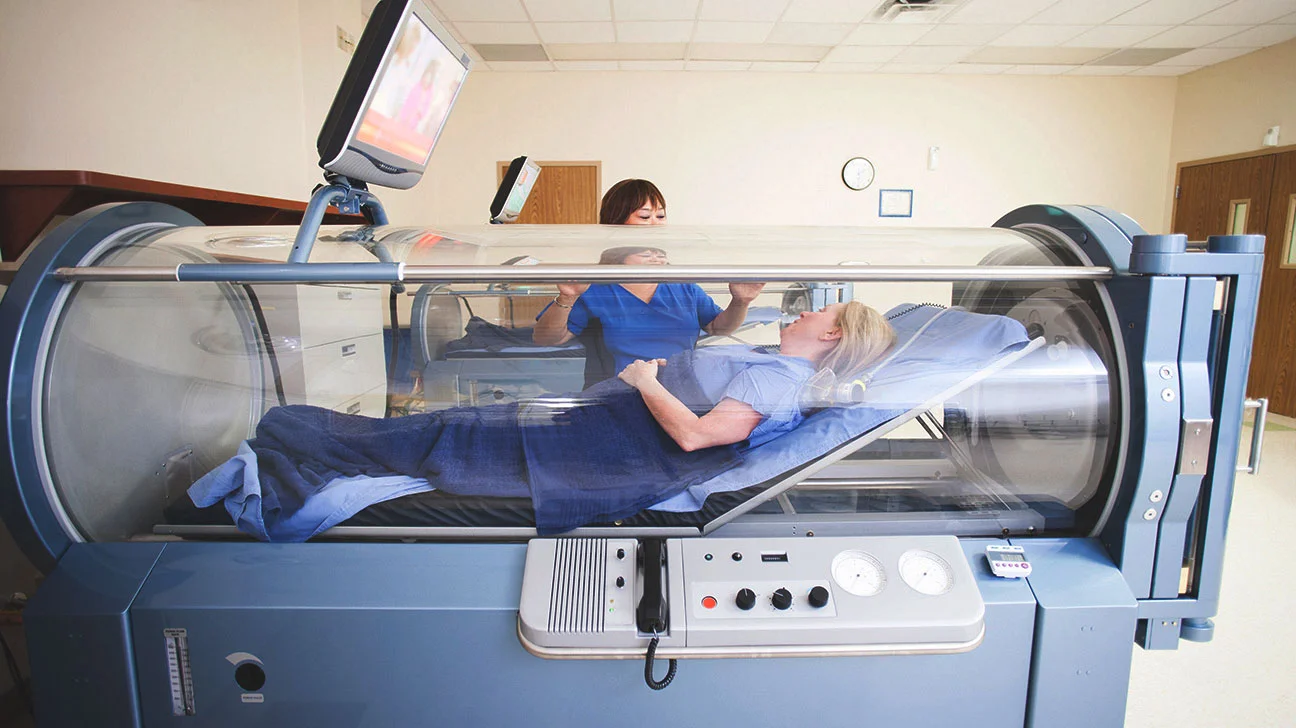Bone infections, medically known as osteomyelitis, pose significant health challenges, leading to chronic pain, reduced mobility, and, in severe cases, amputation. Traditional treatments include antibiotics, surgery, and in some instances, immobilization of the affected area.
However, the quest for more effective treatments has led to the exploration of hyperbaric oxygen therapy as an adjunctive treatment.
This post offers an overview of how hyperbaric chambers may assist in managing bone infections, drawing on expert opinions and research findings.
Understanding Hyperbaric Oxygen Therapy
Hyperbaric oxygen therapy involves breathing pure oxygen in a pressurized chamber. This process significantly increases the oxygen level in the blood, which can help fight bacteria and stimulate the release of substances called growth factors and stem cells, promoting healing.
In the context of bone infection, elevated pressure and oxygen levels, such as those provided by hyperbaric chambers in facilities like those found in Los Angeles, can enhance the body’s natural immune responses. Oxygen plays a crucial role in the healing process, aiding in the function of white blood cells responsible for fighting infection.
By increasing oxygen saturation in the bloodstream, treatments like those offered by hyperbaric Los Angeles help to directly combat bacterial infection in the bone and adjacent tissues. This integration of HBOT into the treatment regimen illustrates how cutting-edge medical practices are applied to improve patient outcomes.
Clinical studies have shown promising results in treating osteomyelitis, particularly when used alongside conventional treatments like antibiotics and surgery. Patients who receive HBOT often experience reduced inflammation, improved healing of infected bone tissue, and a lower risk of amputation. Doctors emphasize that while HBOT is not a standalone cure for bone infection, it significantly enhances treatment outcomes.
Practical Considerations and Doctor Recommendations

While the benefits of HBOT in treating bone infections are clear, there are practical considerations to keep in mind. Accessibility, cost, and the need for multiple sessions are key factors that patients and healthcare providers must consider.
Not every patient with bone infection is an ideal candidate. Doctors assess several factors before recommending this therapy, including the severity of the infection, the patient’s overall health status, and any contraindications to hyperbaric oxygen treatment.
Patients must have a thorough discussion with their healthcare provider to determine if HBOT is suitable for their specific condition.
For those who are deemed good candidates, maximizing the benefits of HBOT involves a commitment to a series of treatment sessions, often daily, over a specified period. Adherence to treatment schedules and concurrent medical therapies is essential.
Doctors also stress the importance of lifestyle adjustments that support overall health, such as nutrition, smoking cessation, and managing chronic conditions that could impair healing, like diabetes.

Conclusion
In conclusion, hyperbaric oxygen therapy represents a promising adjunctive treatment for bone infections, offering a beacon of hope for patients facing this challenging condition. With its potential to enhance the effectiveness of traditional treatments, HBOT deserves consideration in the comprehensive management of osteomyelitis.
As research continues to evolve, the role of HBOT in treating bone infections will become clearer, potentially expanding its use in clinical settings. For patients exploring this treatment option, a detailed discussion with a healthcare professional experienced in hyperbaric medicine is essential to determine the best course of action tailored to their individual health needs.
 World Magazine 2024
World Magazine 2024






